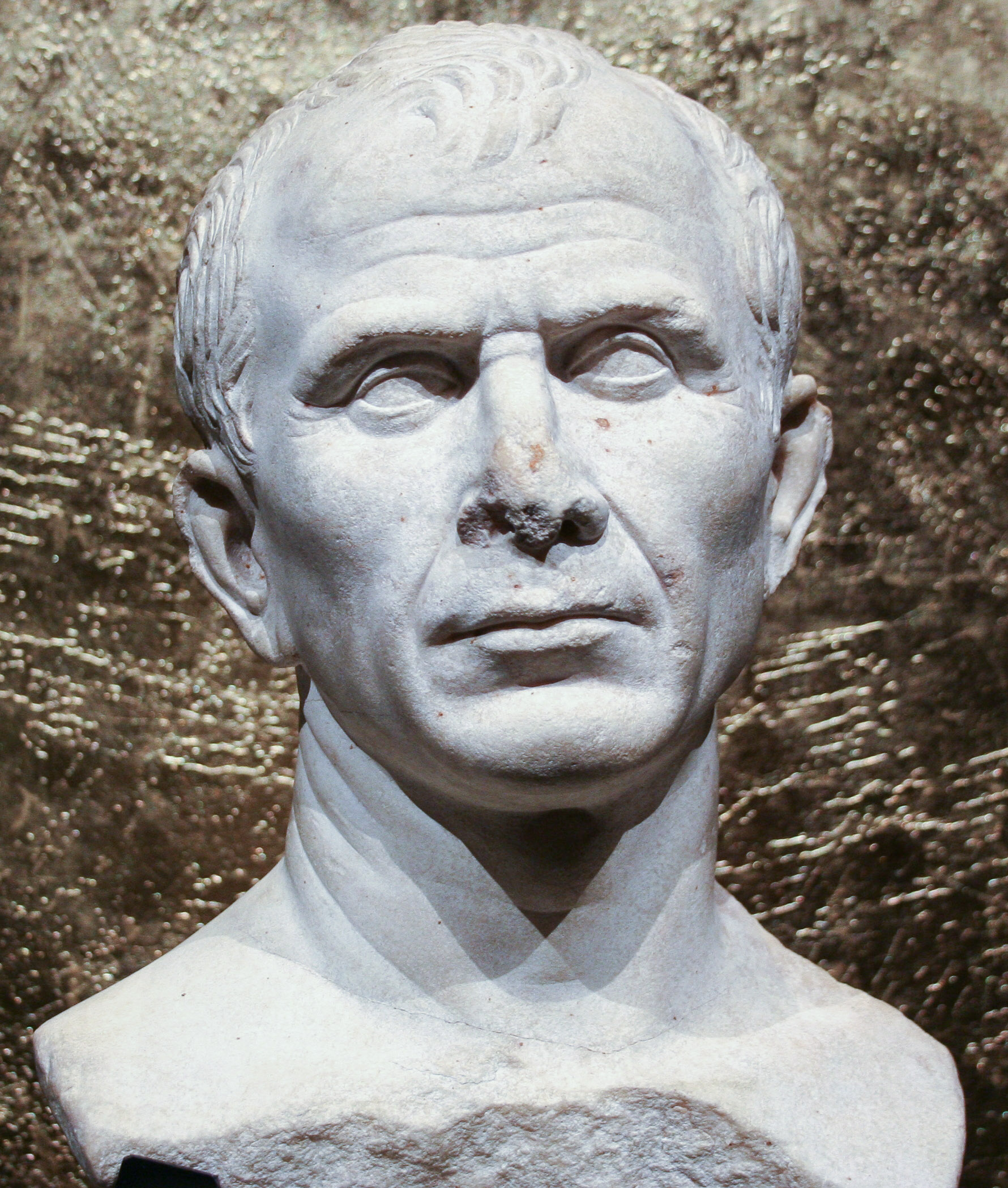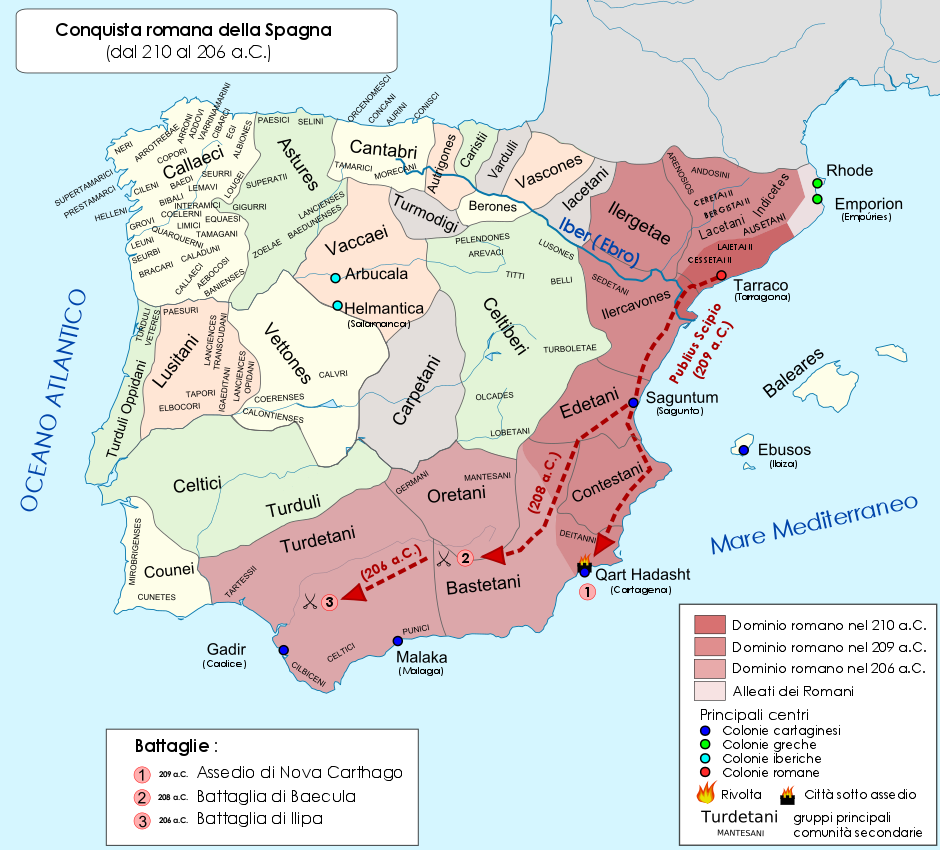|
Roman Busts
Roman portraiture was one of the most significant periods in the development of portrait art. The surviving portraits of individuals are almost entirely sculptures, covering a period of almost five centuries. Roman portraiture is characterised by unusual realism and the desire to convey images of nature in the high quality style often seen in ancient Roman art. Some busts even seem to show clinical signs. Several images and statues made in marble and bronze have survived in small numbers. Roman funerary art includes many portraits such as married couple funerary reliefs, which were most often made for wealthy freedmen rather than the patrician elite. Portrait sculpture from the Republican era tends to be somewhat more modest, realistic, and natural compared to early Imperial works. A typical work might be one like the standing figure "A Roman Patrician with Busts of His Ancestors" (c. 30 B.C.). By the imperial age, though they were often realistic depictions of human anatomy ... [...More Info...] [...Related Items...] OR: [Wikipedia] [Google] [Baidu] |
Lucius Caecilius Iucundus, Plaster Cast Of Roman Bronze And Marble Original, House Of Caecilius Iucundus (V-i-26), Pompeii, C
Lucius is a masculine given name derived from Lucius (Latin ; ), abbreviated L., one of the small group of common Latin forenames () found in the culture of ancient Rome. Lucius probably derives from Latin word ( gen. ), meaning "light" (< *''leuk-'', "brightness"), related to the Latin verb ("to shine") and to the name . Another proposed etymology is derivation from Etruscan ''Lauchum'' (or ''Lauchme'') meaning " |
Lucius Junius Brutus
Lucius Junius Brutus (died ) was the semi-legendary founder of the Roman Republic and traditionally one of its two first consuls. Depicted as responsible for the expulsion of his uncle, the Roman king Tarquinius Superbus after the suicide of Lucretia, in the traditional accounts it is he who led the overthrow of the Roman monarchy. He was then involved in securing the abdication of fellow consul Tarquinius Collatinus, and the suppression of a plot to restore the Tarquinian monarchy. He was claimed as an ancestor of the Roman gens Junia, including Decimus Junius Brutus and Marcus Junius Brutus, the most infamous of Julius Caesar's assassins. Traditions about his life may have been fictional, and some scholars argue that it was the Etruscan king Porsenna who overthrew Tarquinius. The plebeian status of the ''Junia gens'' has also raised doubts about his position as a consul and the alleged initial patrician domination of the office. Depicted as the nephew of Tarquinius, ... [...More Info...] [...Related Items...] OR: [Wikipedia] [Google] [Baidu] |
Pergamon Museum
The Pergamon Museum (; ) is a Kulturdenkmal , listed building on the Museum Island in the Mitte (locality), historic centre of Berlin, Germany. It was built from 1910 to 1930 by order of Emperor Wilhelm II, German Emperor, Wilhelm II and according to plans by Alfred Messel and Ludwig Hoffmann (architect), Ludwig Hoffmann in Stripped Classicism, Stripped Classicism style. As part of the Museum Island complex, the Pergamon Museum was added to the UNESCO World Heritage List in 1999 because of its architecture and testimony to the evolution of museums as architectural and social phenomena. Prior to its closing in 2023, the Pergamon Museum was home to the ', including the famous Pergamon Altar, the and the . In October 2023, the museum was completely closed for visitors, and is expected to remain mostly closed for 14 to 20 years – until 2037 to 2043 – for the execution of comprehensive renovation works. Its North Wing is expected to reopen in 2027. Origin By the time the K ... [...More Info...] [...Related Items...] OR: [Wikipedia] [Google] [Baidu] |
Grave Relief Of Publius Aiedius And Aiedia
The Grave relief of Publius Aiedius and Aiedia is an ancient Roman grave relief from the first half of the first century AD, now kept in the Pergamonmuseum / Antikensammlung Berlin, with Inventory number SK 840 (R 7). It is a 64 cm wide and 99 cm high marble plaque, which was found in Rome on the Via Appia and was purchased for the predecessor of the modern Antikensammlung Berlin in 1866. The inscription under the relief reads: Translated: Publius Aiedius Amphio is identified by the ''L'' in the inscription as a ''libertus'' or freedman of a Publius Aiedius. His slave name, the Greek name Amphio, typical for Roman slaves, is retained as his cognomen. The name of his wife, also identified as a freed slave of Publius Aiedius, was Fausta Melior. As freedmen, the pair held a form of Roman citizenship, but remained bound to their former owner, who was now their patron. They had gained the right to enter into a legal marriage and children produced from such a marriage woul ... [...More Info...] [...Related Items...] OR: [Wikipedia] [Google] [Baidu] |
Arles
Arles ( , , ; ; Classical ) is a coastal city and Communes of France, commune in the South of France, a Subprefectures in France, subprefecture in the Bouches-du-Rhône Departments of France, department of the Provence-Alpes-Côte d'Azur Regions of France, region, in the former Provinces of France, province of Provence. A large part of the Camargue, the largest wetlands in France, is located within the territory of the commune, which is the List of French communes by surface area, largest in Metropolitan France in terms of geographic territory. In non-metropolitan France, Maripasoula in French Guiana is the largest French commune in general. The commune's land area is roughly similar to that of Singapore. The city has a long history, and was of considerable importance in the Roman province of Gallia Narbonensis. The Arles, Roman and Romanesque Monuments, Roman and Romanesque Monuments of Arles were listed as UNESCO World Heritage Sites in 1981 for their testimony to the his ... [...More Info...] [...Related Items...] OR: [Wikipedia] [Google] [Baidu] |
Arles Bust
The Arles bust is a life-sized marble bust of a man, possibly Julius Caesar, dating to around the 1st century BC. It is part of the collection of the Musée de l'Arles antique. It was discovered in September–October 2007 in the Rhone River near Arles, southern France, by divers from the French Department of Subaquatic Archaeological Research. During the same campaign, divers also recovered smaller statues of Marsyas in Hellenistic style and a life-size marble sculpture of Neptune dating, from its style, to the 3rd century AD. Analysis The uncompromising realism of the portrait places it in the tradition of late Republican Roman portrait and genre sculptures of the 1st century BC. The archaeologists who discovered the bust claimed that it was a portrait of Julius Caesar, and dated it to approximately 46 BC, making it the oldest known representation of Caesar, according to France's Minister of Culture, Christine Albanel. They further suggested that the bust was discreetly d ... [...More Info...] [...Related Items...] OR: [Wikipedia] [Google] [Baidu] |
Scipio Africanus
Publius Cornelius Scipio Africanus (, , ; 236/235–) was a Roman general and statesman who was one of the main architects of Rome's victory against Ancient Carthage, Carthage in the Second Punic War. Often regarded as one of the greatest military commanders and strategists of all time, his greatest military achievement was the defeat of Hannibal at the Battle of Zama in 202 BC. This victory in Africa earned him the honorific epithet ''Africanus'', literally meaning 'the African', but meant to be understood as a conqueror of Africa (Roman province), Africa. Scipio's conquest of Carthaginian Iberia culminated in the Battle of Ilipa in 206 BC against Hannibal's brother Mago Barca. Although considered a hero by the Roman people, primarily for his victories against Carthage, Scipio had many opponents, especially Cato the Elder, who hated him deeply. In 187 BC, he was tried in a show trial alongside his brother for bribes they supposedly received from the Seleucid king Antiochus III ... [...More Info...] [...Related Items...] OR: [Wikipedia] [Google] [Baidu] |
Isis
Isis was a major goddess in ancient Egyptian religion whose worship spread throughout the Greco-Roman world. Isis was first mentioned in the Old Kingdom () as one of the main characters of the Osiris myth, in which she resurrects her slain brother and husband, the divine king Osiris, and produces and protects his heir, Horus. She was believed to help the dead enter the afterlife as she had helped Osiris, and she was considered the divine mother of the pharaoh, who was likened to Horus. Her maternal aid was invoked in healing spells to benefit ordinary people. Originally, she played a limited role in royal rituals and temple rites, although she was more prominent in funerary practices and magical texts. She was usually portrayed in art as a human woman wearing a throne-like hieroglyph on her head. During the New Kingdom (), as she took on traits that originally belonged to Hathor, the preeminent goddess of earlier times, Isis was portrayed wearing Hathor's headdress: a ... [...More Info...] [...Related Items...] OR: [Wikipedia] [Google] [Baidu] |
Cato The Elder
Marcus Porcius Cato (, ; 234–149 BC), also known as Cato the Censor (), the Elder and the Wise, was a Roman soldier, Roman Senate, senator, and Roman historiography, historian known for his conservatism and opposition to Hellenization. He was the first to history of history#Roman world, write history in Latin with his ''Origines'', a now fragmentary work on the history of Rome. His work ''De agri cultura'', a treatise on agriculture, rituals, and recipes, is the oldest extant prose written in the Latin language. His epithet "Elder" distinguishes him from his great-grandson Senator Cato the Younger, who opposed Julius Caesar. He came from an ancient Plebs, plebeian family who were noted for their Roman army, military service. Like his forefathers, Cato was devoted to Roman agriculture, agriculture when not serving in the army. Having attracted the attention of Lucius Valerius Flaccus (consul 195 BC), Lucius Valerius Flaccus, he was brought to Rome. He was successively milita ... [...More Info...] [...Related Items...] OR: [Wikipedia] [Google] [Baidu] |
Etruscan Alphabet
The Etruscan alphabet was used by the Etruscans, an ancient civilization of central and northern Italy, to write Etruscan language, their language, from about 700 BC to sometime around 100 AD. The Etruscan alphabet derives from the Euboean alphabet used in the Ancient Greece, Greek colonies in southern Italy which belonged to the "western" ("red") type, the so-called Western Greek alphabet. Several Old Italic scripts, including the Latin alphabet, derived from it (or simultaneously with it). Origins The Etruscan alphabet originated as an adaptation of the Euboean alphabet used by the Euboea, Euboean Greeks in their first colonies in Italy, the island of Pithekoussai and the city of Cumae in Campania. In the alphabets of the West, X had the help:IPA, sound value , Ψ stood for ; in Etruscan: X = , Ψ = or (Rix 202–209). The earliest known Etruscan ''abecedarium'' is inscribed on the frame of a wax tablet in ivory, measuring , found at Marsiliana (near Grosseto, Tuscany). It ... [...More Info...] [...Related Items...] OR: [Wikipedia] [Google] [Baidu] |








